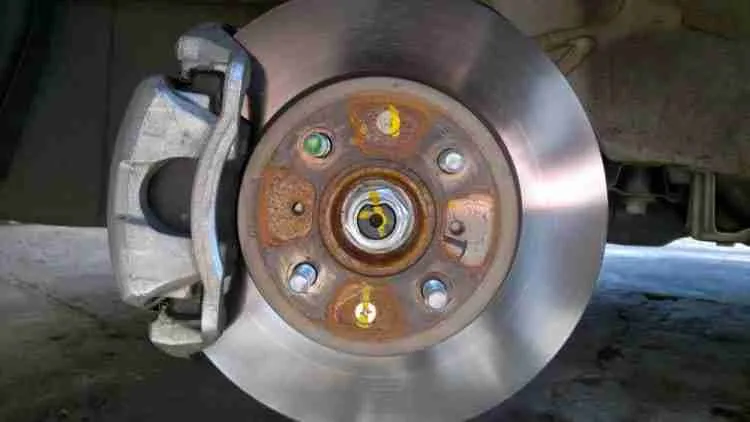How to tell if you have single or dual-piston calipers?

Brake calipers, what are they and how they affect the braking system?
It wouldn’t be surprising if you had a blank look when someone mentioned brake calipers to you. You might have nodded along, but honestly, you had no idea about what they were. Actually, the function of brake calipers is not really well known to everyone. They perhaps are one of the most important parts of a brake. Well, this article will talk all about brake calipers and specifically how you tell a single-piston caliper apart from a dual-piston brake caliper.
A caliper is a component of the disc brake system and can be found in the front end of the system, that is, the front brakes. The brake caliper is responsible for housing the brake pads and pistons. A brake caliper slows the speed of the car by creating friction with the brake rotors. The brake caliper fits on the wheel’s rotor like a clamp to keep it from turning when you step on the brakes.
The brake pads are nothing but a pair of metal plates present inside each caliper. The pressure is created by the brake fluid on the pistons in the caliper after the brake pedal is pushed. This forces the pads against the brake rotor which, in turn, slows down the car.
The caliper assembly lives in the brakes. It is connected to the main cylinder by a variety of components: tubes, valves, and hoses that conduct the brake fluid through the system.
How many pistons are there in my brake caliper?
Well if you are thinking that finding the number of pistons in your brake caliper is going to be hard, then worry no more! You can keep your wheel on and get to know the answer. Yes, it is that easy!
Open-wheel designs can be found in automobiles to visually facilitate how many pistons the caliper has. Single or dual calipers usually have arches on them. The number of arches will help you understand how many pistons are there in it.
- Single piston calipers are the ones that are always sliding. They move to some extent as the brake pads wear. Most of them have a bracket. The bracket is built into the knuckle of the vehicle in a lot of cases.
- Dual-piston calipers are also sliding calipers with brackets. There are dual-piston calipers that have fixed positions along with opposing pistons. One is on the inboard and another on the outboard side.
Speaking in simple terms, the circles on the body of the caliper can be usually identified externally and the pistons can be counted too. It is possible that there is one piston on one side or two pistons on two sides or even two pistons on the same side of the body.
The more, the better?
Brake calipers have different styles and sizes but their basic function is the same. They push the friction material (the brake pads) into the spinning brake disc. This slows down the speed of the disc as well as the wheel it is attached to.
The most common setup in a brake caliper is the ‘floating setup’. This just uses one piston in it. The pedal presses the fluid down the piston which, in turn, pushes the piston out to the disc. The caliper can move slightly inboard when the first pad touches or strikes the disc. The other pad is then pulled to the other side of the disc. This happens due to the effective contact of the first pad. Lifting the brake off turns everything back to normal.
This setup is the usual setup for normal cars like hatchbacks and is perfectly functional if maintained and lubricated properly. The only reason for you to upgrade into a dual setup would be for aesthetics. It will not really add any functional value to the car. Cars that can generate more power need calipers with more pistons to handle that and send more force down the disc for better braking. Here is where dual pistons come in.
Dual pistons follow the same principles as single-piston calipers but offer a feeling of greater control at crucial points in braking. These work for fast but still lightweight cars.
There are even more advanced piston calipers like the four-piston or the six-piston caliper but they are usually reserved for high-end cars like sports cars or race cars. Formula 1 cars, for example, use 6 pistons along with two mountings made of aluminum alloys. These are more complicated topics and would really not fall within the bandwidth of this article as it is.
Pay attention to your brake calipers when required
The seals inside the calipers can be broken as time passes under normal driving conditions. They might also become contaminated or dusty. It is also possible that it starts leaking brake fluid if you do not take your car out for a spin that often.
Get your brakes checked if you experience any of the following symptoms:
- The brakes are grinding or squeaking.
- ABS lights come on.
- Your brakes need to be pumped for them to work properly.
- There is a brake fluid leak around the engine compartment.
- Your car pulls to one side while braking.
- Your brake pedal either feels too soft or too hard. That is, it feels unusual.
Final Thoughts
Remember the same time when you had gone blank when a conversation regarding brakes and calipers were on? Well, now you don’t have to. This article covers everything about pistons and brakes. The next time you will be the master at the table!













No Comment